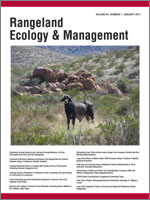Rotational grazing systems (RGS) are often implemented to alleviate undesirable selective grazing by livestock. At both fine and coarse scales, livestock selectively graze individual plants, patches, communities, and landscapes. Smaller pastures, increased stocking density, and rotation allow managers to constrain livestock movement and determine season and frequency of grazing, potentially limiting selectivity and preventing repeated grazing of preferred plants. However, in arid and semi-arid rangelands, forage growth is limited primarily by precipitation rather than defoliation frequency. When soil moisture is adequate, forage is abundant and defoliation levels are typically low, and repeated, intensive defoliation of preferred plants is less likely than in more mesic areas where more consistent precipitation and soil moisture storage allows animals to establish and maintain spatial hierarchies of grazing patterns. Many southwestern rangelands contain diverse vegetation, which provides quality forage during different times of the year. These spatial and temporal patterns of forage distribution may not be amenable to manipulation with RGS. Tracking data show that livestock often alternate among locations within pasture boundaries and can opportunistically exploit areas with higher quality forage when they are available. Higher stock densities combined with higher stocking rates can increase livestock use of less preferred areas, but overall distribution patterns of intensive-rotational and extensive grazing systems are often comparable at similar stocking rates and distances from water. Management that ensures that grazing of riparian areas does not occur during the critical late summer period may be more beneficial than RGS that periodically defers livestock use throughout the grazing season. In arid and semi-arid shrublands, timely adjustments to animal numbers and practices that improve grazing distribution at regional and landscape scales are more likely to be effective in maintaining or improving rangeland health than fencing and RGS.
How to translate text using browser tools
1 January 2011
Rotational Grazing Systems and Livestock Grazing Behavior in Shrub-Dominated Semi-Arid and Arid Rangelands
Derek W. Bailey,
Joel R. Brown
ACCESS THE FULL ARTICLE
foraging strategies
grazing management
grazing systems
livestock behavior
livestock distribution
stocking density





